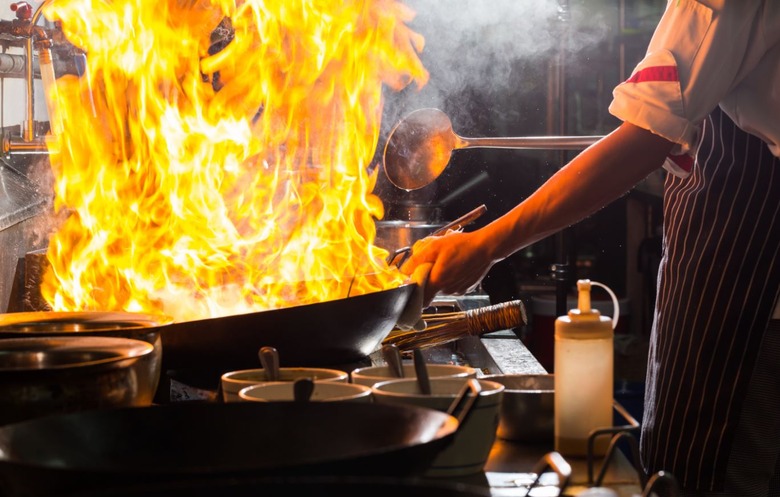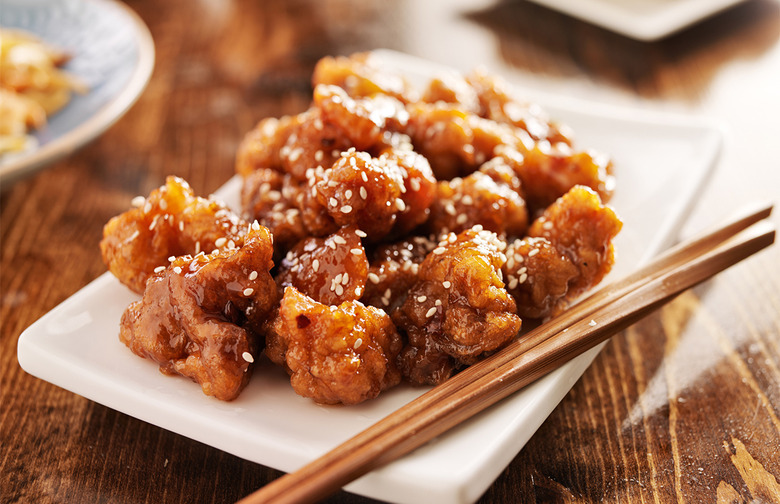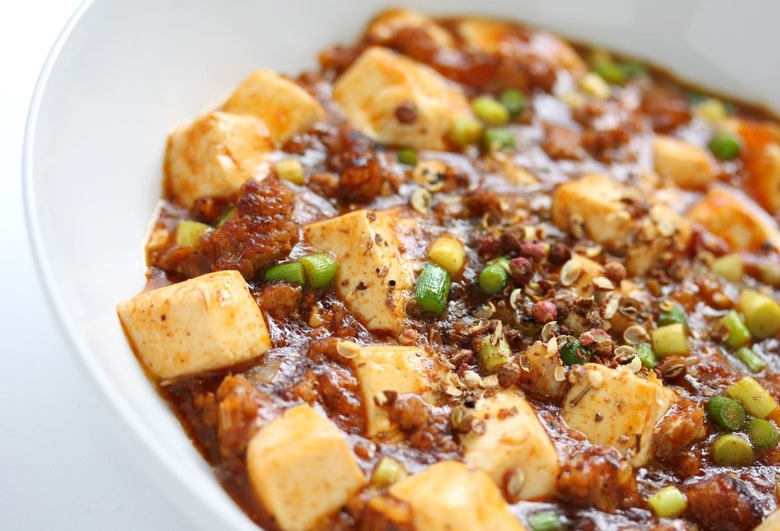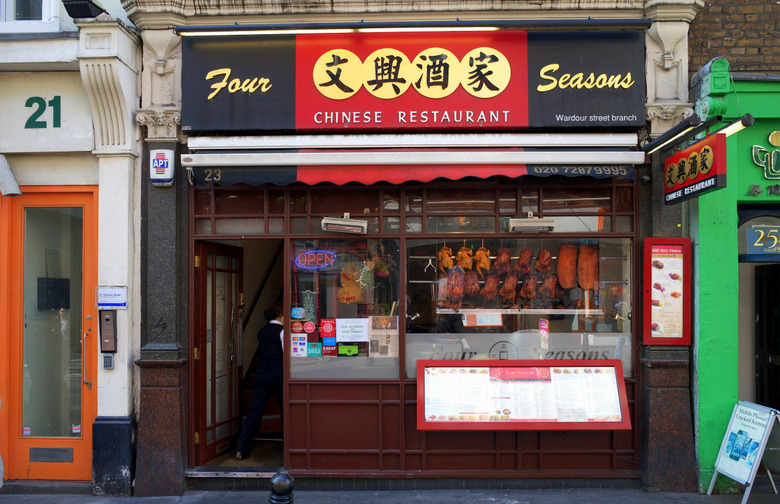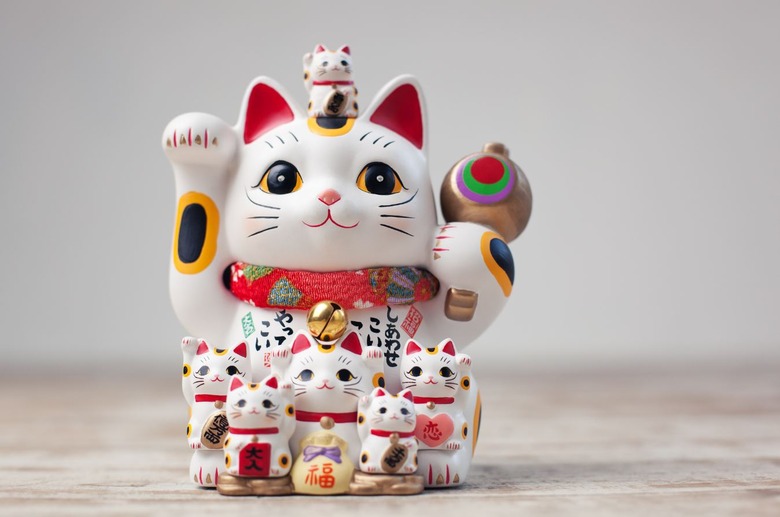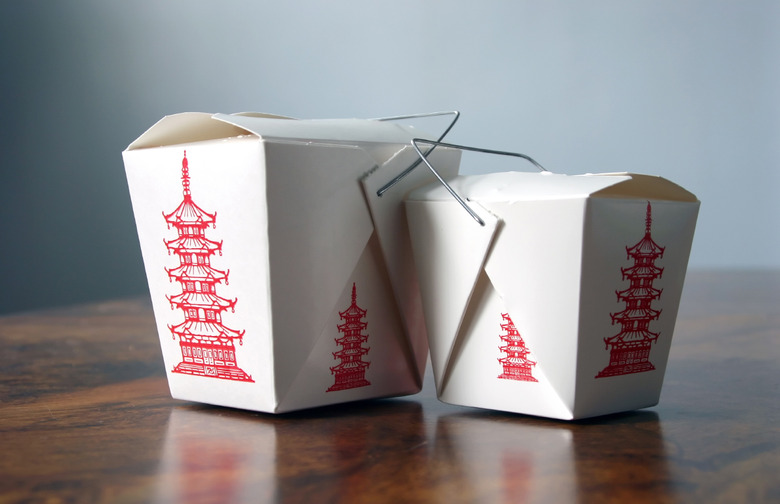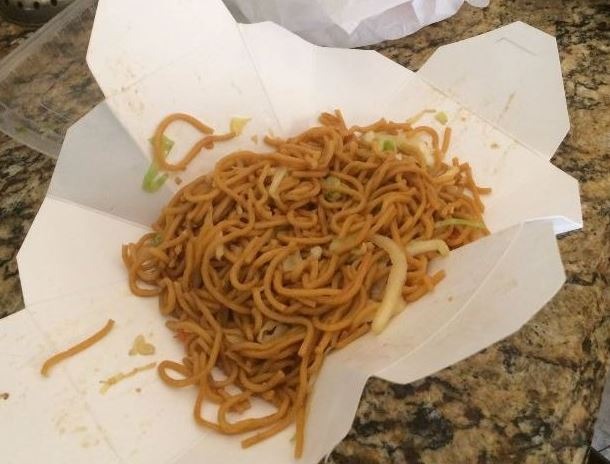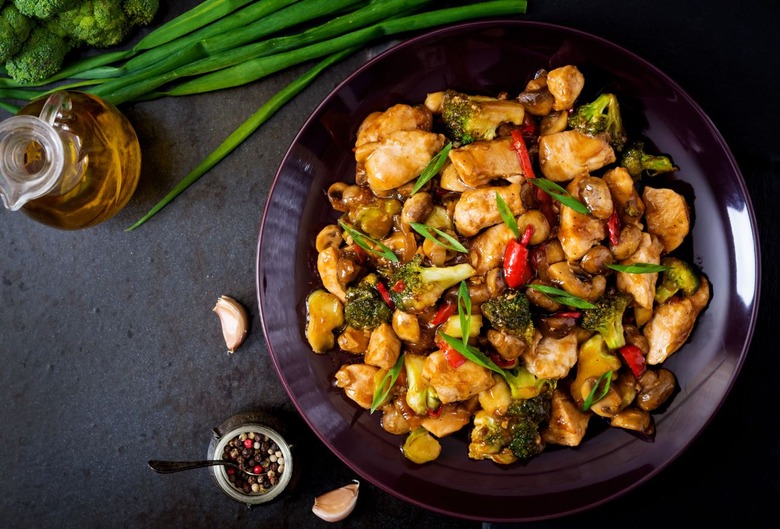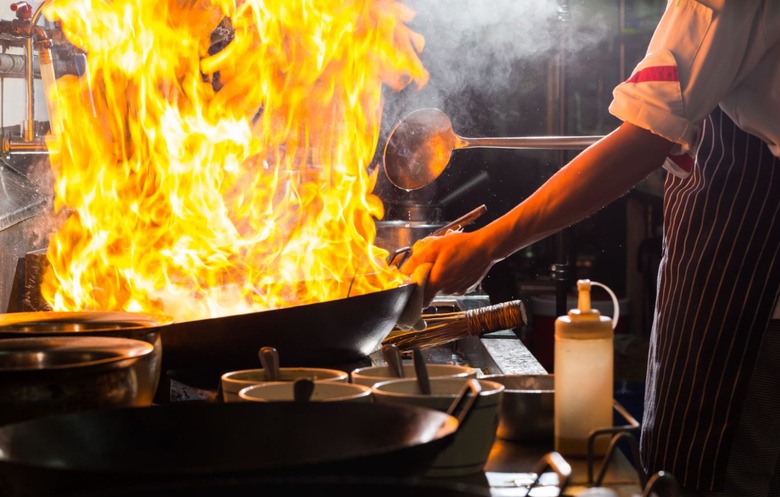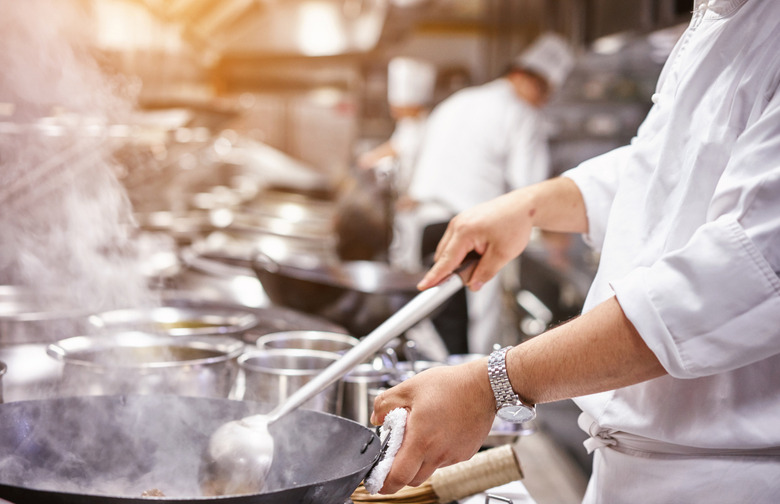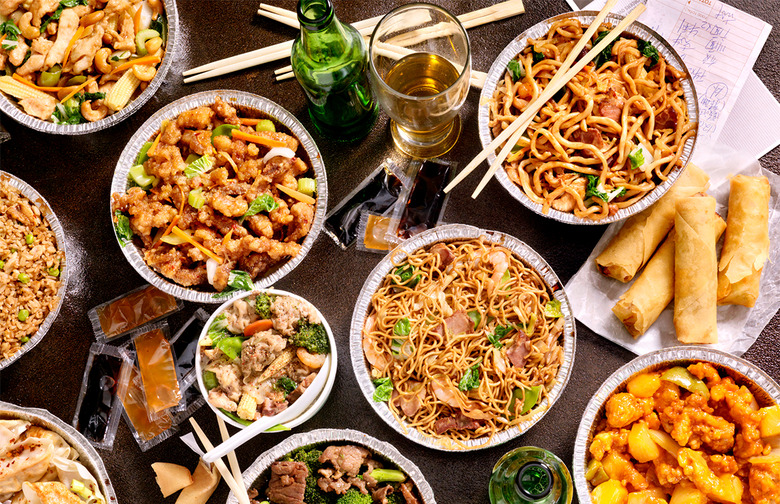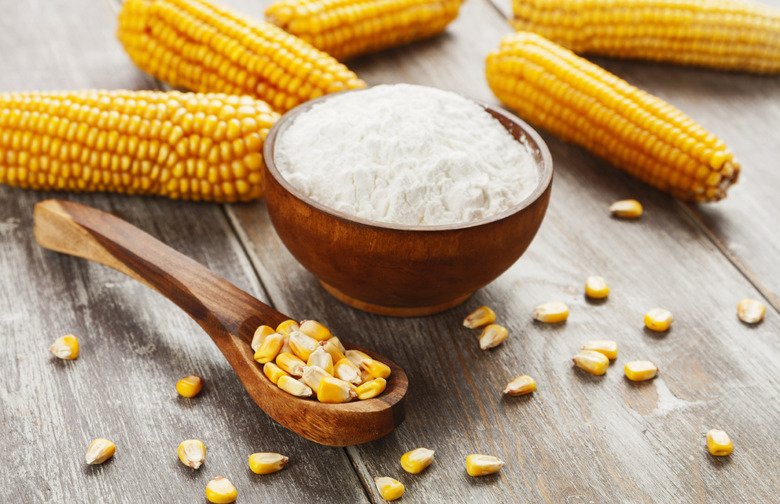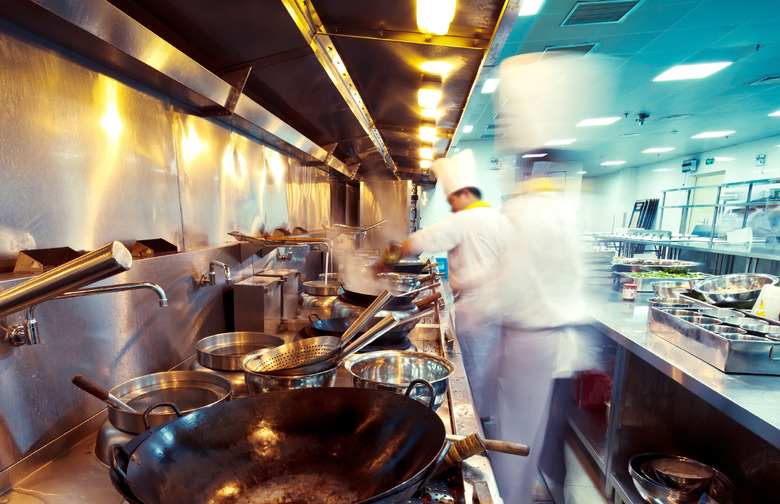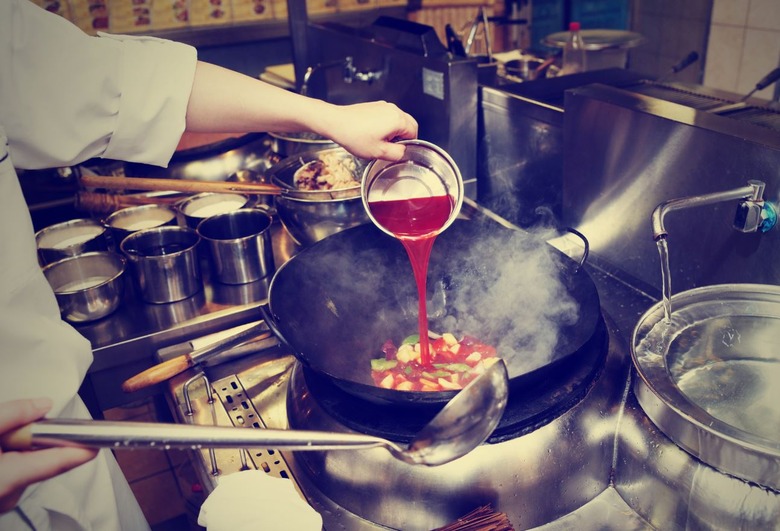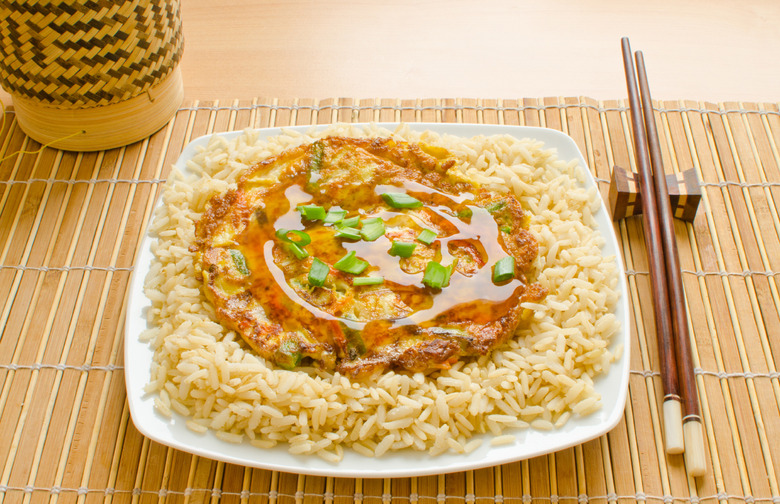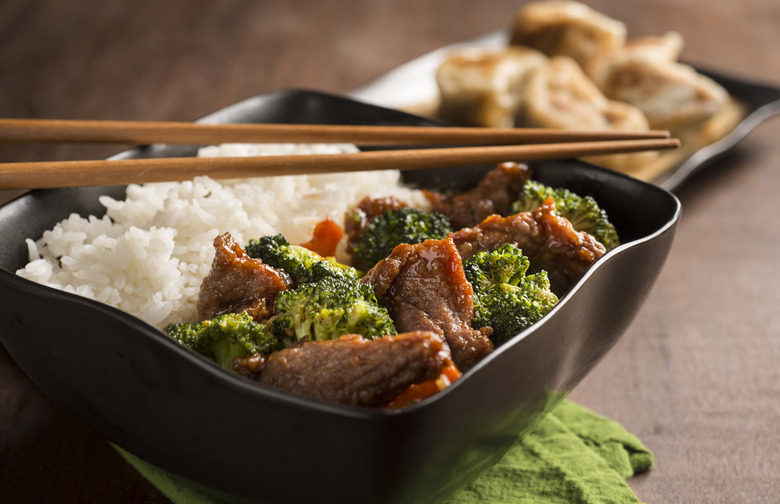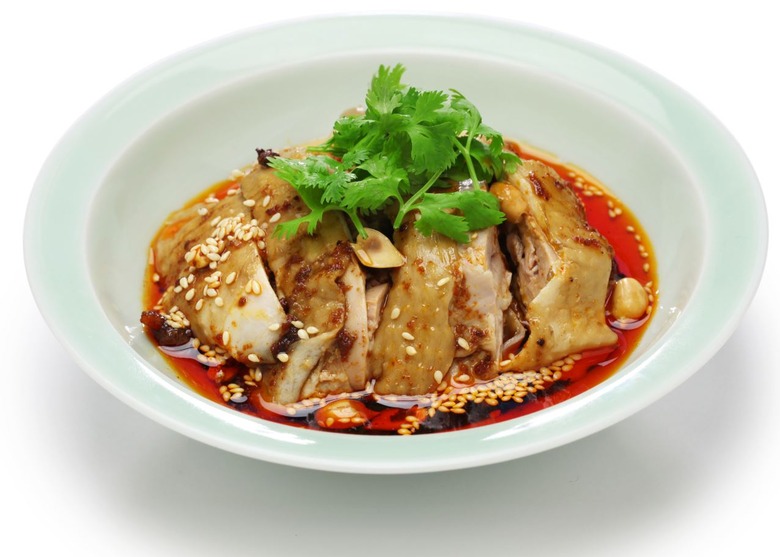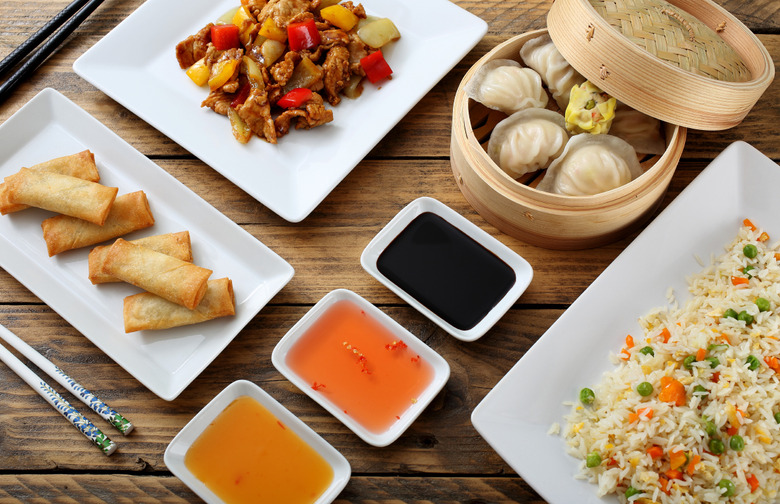20 Secrets Of Your Local Chinese Takeout Joint Slideshow
There isn't much these days that ties all Americans together, but I think we can all agree that having a Chinese takeout spot nearby is a very good thing. And in all likelihood, you do have a Chinese takeout spot at your beck and call, because there are more than 40,000 of them spread throughout the country, ready to bring us some wonton soup and chicken lo mein at a moment's notice. But each of those countless restaurants is a well-oiled machine, and we bet there's a lot going on behind the scenes that you don't know about.
Most of the Dishes Don’t Exist at All in China
Authentic Chinese food isn't traditionally sweet, battered and fried, or so chicken breast-centric. You also don't see vegetables like peas, carrots, broccoli, or white button mushrooms very often in authentic Chinese cuisine. Chinese-American cuisine, for the most part, was created by Chinese immigrants who used the ingredients at their disposal, and adapted the flavors for American palates. You're not going to find beef with broccoli in China!
It’s Inspired by Just a Few Chinese Provinces
Many of the Americanized Chinese dishes found at Chinese restaurants were inspired by Cantonese and Hunan dishes, as well as the cuisine of Hong Kong and Beijing (Sichuan dishes, with their fiery chiles and numbing peppercorns, are starting to catch on in popularity as well). But you're not going to see steamed lily with sweetened bean paste – a Lanzhou specialty – at any Chinese-American restaurants.
Owners Track the Industry Through Magazines
If you're wondering why all Chinese spots seem to be remarkably similar to one another, it's because there are industry magazines that help their owners keep up with the latest trends. Chinese Restaurant News is especially popular.
You Can Usually Find Truly Authentic Dishes, If You Know Where to Look
Contrary to popular belief, Chinese guests don't usually receive a separate menu from American guests; they just know what to order. Don't be afraid to expand outside of your comfort zone; you might be pleasantly surprised!
There’s a Method to Choosing Restaurant Names
If nearly all Chinese restaurant names sound generically similar, there's a reason for that. Words like happy, lucky, golden, and happy are chosen because they're intended to bring luck.
They’re Full of Superstitious Iconography
Look around your run-of-the-mill Chinese takeout joint, and even if it's sparsely decorated you'll most likely find decorations like buddhas and wall hangings. Some might be decorative, but the majority are talismans intended to bring good luck — even the paw-waving "fortune cat," which has Japanese origins.
Those Takeout Boxes Were Designed in Chicago by an American
One of the most iconic symbols of Chinese takeout is the classic white paper container. It was actually developed in 1894 by a Chicago inventor named Frederick Weeks Wilcox. It was intended to improve on the oyster pail, which was a common way of transporting food back then. In the 1970s, a graphic designer at a company now called Fold-Pak decided to put a pagoda on the side and "Thank you" on top, and the rest is history. Funnily enough, they're not even sold in China.
Takeout Boxes Unfold to Become Plates
If you're hard-up for a plate to enjoy your lo mein on, you can just unfold the container.
The Sauces Are Impossible to Replicate at Home
If you're wondering why your home-cooked Chinese food never tastes quite like it does from the local take-out spot, an overlooked reason is the sauce. The bottled stuff you find in the supermarket (and even the stuff you can make from recipes) don't come close to what you find in the restaurants, because these sauces are usually made by combining two or more other sauces, all of which have their own seasonings.
Their Woks Get Hotter Than You Can Imagine
Some compare cooking on a wok to cooking on a jet engine. They get face-meltingly hot, to a degree that's impossible to replicate in a home kitchen. In fact, another one of the primary reasons why home-cooked Chinese food never tastes quite like restaurant-cooked versions do is the wok-hei, or "breath of the wok," a complex, smoky flavor that's derived from the combination of extreme heat and a well-seasoned wok.
The Preparation of Dishes Is Timed to the Second
If you've ever watched a chef cook a dish in a wok, it's pretty amazing. Because of the intense heat, all the components need to be added at exactly the right second for the finished dish to come together without any one component being under- or overcooked. That guy working the wok at your local takeout joint? What he does takes years of practice.
There’s a Simple Reason Why So Many of Them Are Similar
Along with keeping on top of industry trends, many of the restaurants are so similar because it's easier and less risky to replicate what's been successful in the past instead of trying to build something from scratch. Most restaurants also receive their ingredients and paper goods from the same regional suppliers.
They Use a Lot of Corn Starch
Corn starch is one of the most important ingredients in the Chinese-American restaurant kitchen. It coats chicken and beef to keep it moist and create a crust during cooking, and it's also the primary thickener in soups and sauces.
Many Menus Come From New York’s Chinatown
New York's Market Street is home to a half-dozen or so printing houses that are responsible for printing up the paper menus found at many of the country's Chinese restaurants. There's a great New York Times article about the micro-industry here.
If You See Kids Working There, Don’t Worry
Many Chinese takeout spots are family-run, and it's not uncommon for the children of the family to start working there at a young age. It doesn't run afoul of any child labor laws, because according to the Department of Labor, "Minors under age 16 working in a business solely owned or operated by their parents or by persons standing in place of their parents, can work any time of day and for any number of hours," as long as it's not an occupation that's been declared hazardous, like mining.
Few Dishes Take Longer Than 5 Minutes to Cook
If you're wondering how on earth your sesame chicken took just 10 minutes to reach your door from the moment you hung up the phone, it's because aside from a handful of dishes like roast duck, most Chinese takeout dishes take no longer than 5 minutes to make. For sesame chicken, for example, the chicken is seasoned and battered, deep-fried, moved to a different wok, tossed with sauce and broccoli, and transferred to the container.
Egg Foo Young Sauce Is the Hardest to Make
According to a Chinese restaurant employee who conducted a Reddit AMA, it's the sauce that tops egg foo young that's the hardest one to make, because it contains the most ingredients.
It’s Almost Impossible to Avoid MSG
Even if a Chinese restaurant says that there's no MSG in their food, it's almost completely impossible to avoid it; while they might not add any MSG to the dishes they're preparing, there's almost always some in the sauces. MSG is also naturally occurring in soy sauce, so it's basically impossible to avoid. You shouldn't worry about MSG anyway; it's just the salt form of an amino acid and it's not going to hurt you.
If There’s an Authentic Dish You Want, Just Ask for It
If there's one specific authentic Chinese dish that you'd like prepared for you, just ask for it by name, along with a brief description of its components; if they have all the ingredients on hand and it doesn't require too much prep work, they'll probably be more than happy to prepare it for you. Just make sure you place your order in person.
Some Will Sell You Containers of Sauce
That magic brown sauce that you can't replicate at home, no matter how hard you try? Just ask for a container of it and they'll most likely sell it to you! They can even sell it to you cold, so you can put it right into your fridge and use it whenever you need some.
